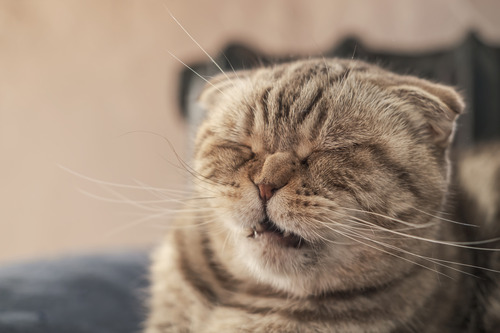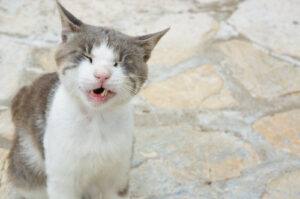Reverse sneezing in cats is a condition that may sound alarming at first, but it’s generally less serious than it appears. This blog post aims to demystify cat reverse sneezing for pet owners, explaining what it is, why it happens, and when you might need to consult a professional. While reverse sneezing rarely indicates a severe health issue, knowing the signs and understanding the triggers can help you ensure your cat’s comfort and well-being.
What Is Cat Reverse Sneezing?
Reverse sneezing, also known as inspiratory paroxysmal respiration, occurs when a cat inhales air rapidly and noisily through the nose, causing a sudden, forceful respiratory action. Unlike a regular sneeze where air is expelled out, reverse sneezing involves a loud snorting sound and can look as though your cat is struggling to breathe. This can be startling, but it’s usually a benign occurrence.
Common Triggers
Several factors can trigger reverse sneezing in cats, including irritants like dust, perfumes, or cleaning agents, as well as allergens in the environment. Viral, bacterial, or fungal infections can also lead to episodes of reverse sneezing, as can a sudden change in temperature. Understanding these triggers can help you minimize your cat’s exposure and reduce the frequency of these episodes.
How to Identify Reverse Sneezing
Identifying a reverse sneeze episode is crucial for differentiating it from other respiratory conditions like asthma or respiratory infections, which can be more serious. Signs of cat reverse sneezing include a stiff, extended neck, a snorting sound, and what appears to be difficulty in breathing. These episodes are typically short-lived, lasting only a few seconds to a minute.
When to Worry
While occasional reverse sneezing is normal, frequent episodes or those accompanied by other symptoms like nasal discharge, lethargy, or a decrease in appetite could indicate an underlying health issue. In such cases, it’s best to consult a veterinarian.
When to Consult a Veterinarian
If you notice that your cat’s reverse sneezing episodes are frequent or severe, it might be time to consult with a professional. Keep a record of the sneezing episodes, noting the duration, frequency, and any potential triggers or accompanying symptoms. This information will be invaluable to your veterinarian in diagnosing and advising on any necessary treatments.
Contacting Cheyenne Mountain Animal Hospital
For peace of mind and professional advice, call Cheyenne Mountain Animal Hospital at (719) 475-1314. Our team is here to assist with any concerns you may have about your cat’s health and to provide guidance on how best to manage reverse sneezing episodes.
Preventing and Minimizing Episodes
Environmental Management
Managing your cat’s environment is one of the most effective ways to prevent reverse sneezing. This includes maintaining a clean living area free of dust, smoke, and strong odors. Regularly replacing air filters and minimizing the use of aerosols or strong perfumes can also help reduce irritants that trigger reverse sneezing.
Regular Veterinary Check-Ups
Scheduling regular check-ups for your cat can help catch and address any underlying conditions that may be causing reverse sneezing. Early detection and treatment of infections or allergies can significantly reduce the frequency of these episodes.
Uncovering Cat Reverse Sneezing
Understanding cat reverse sneezing is crucial for pet owners looking to ensure their cat’s comfort and health. While it’s usually not a sign of a serious condition, being informed about the signs, triggers, and appropriate responses can help you care for your cat effectively. If you’re concerned about your cat’s reverse sneezing, or if episodes become frequent, reaching out to a professional, such as those at Cheyenne Mountain Animal Hospital, is a prudent step. Remember, we are here to support you and your cat, ensuring a happy, healthy life together. Call Cheyenne Mountain Animal Hospital at (719) 475-1314 to schedule an appointment..





